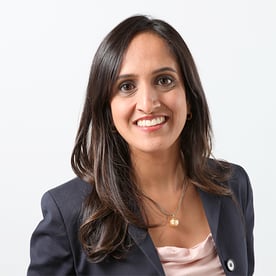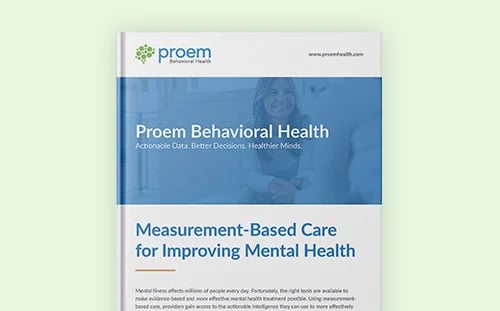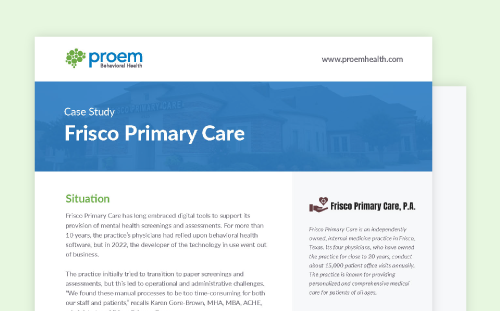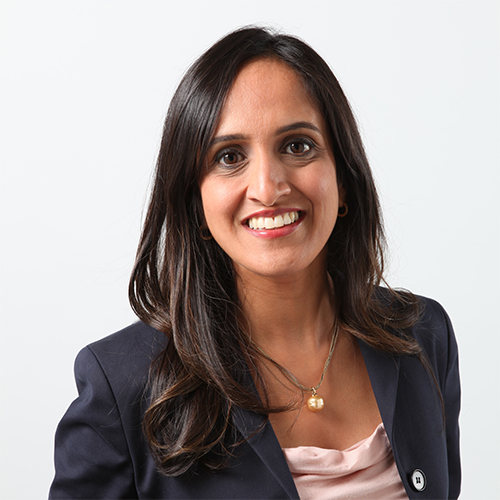 Hansa Bhargava, MD, is a staff physician at Children’s Healthcare of Atlanta, senior medical director with WebMD, and chief medical officer at Medscape Education. As a thought leader in innovation, mental health, maternity, and pediatrics, Dr. Bhargava often speaks on using current digital footprints to elevate data and education to help disparities, opioid addiction, and mental health.
Hansa Bhargava, MD, is a staff physician at Children’s Healthcare of Atlanta, senior medical director with WebMD, and chief medical officer at Medscape Education. As a thought leader in innovation, mental health, maternity, and pediatrics, Dr. Bhargava often speaks on using current digital footprints to elevate data and education to help disparities, opioid addiction, and mental health.
She is currently on the board for the Emory University Global Health Institute and Christopher Wolfe Foundation and is an executive member of the committee on communications and media for the American Academy of Pediatrics.
Q: What makes mental health such a challenging area for healthcare professionals?
Dr. Hansa Bhargava: There are so many ways that it is challenging. First, there’s the challenge associated with raising awareness for patients that mental wellness is something that’s important and can affect everyone. There’s also the challenge of raising awareness for healthcare professionals in terms of how to assess and address these issues in an efficient manner that is consistent with their workflow.I believe the workflow itself has been challenging for a lot of physicians, nurses, and other healthcare professionals. They are often already operating at maximum capacity. Mental health issues can take longer to diagnose, so how do you fit that into your workflow?
So, there are the challenges of awareness, education, and logistics of actually putting it into your workflow, and then lastly, and really importantly, the lack of resources available. Once you have a diagnosis, what do you do? That’s where access to doctors and nurses, reimbursement for covered services, and all the issues that stand in the way of acting on a diagnosis come into play.
Q: How have you seen the pandemic affect mental health?
HB: The pandemic definitely affected mental health. Experts are calling mental health “the next pandemic.” There are many reasons why. First, even prior to the pandemic, mental health issues were on the rise. We saw this in the teen population and many adults. The rise is largely tied to the fast-paced life we live coupled with the buffers of community taking a reduction in time. People are just so busy that they don’t stop to do the things that actually help us as humans.
The pandemic was a catalyst and accelerated these issues. The biggest reason: The very same health measures that protected us from the pandemic probably exacerbated the mental health issues. More specifically, the social isolation we encountered. You need socialization to help you with parasympathetic activation. This not only buffers against stress but is also something we just need as humans. We rely upon this to help us prevent mental health issues and prevent existing issues from getting worse. Unfortunately, we’re seeing a new wave of depression and anxiety. Another aspect of how the pandemic is impacting mental health is that there is a lot of news media with stressful headlines. Unfortunately, we now have news media 24/7. During the pandemic, it was COVID, COVID, COVID all the time. That was hard to take, and people were understandably scared and fearful. That exacerbated our stress and anxiety.
Q: How do we begin to take the steps necessary to fix this flawed system?
HB: Let’s consider the journey for someone who has mental health issues. They need to be aware of them, then they go to the doctor or provider to get diagnosed. Once they get diagnosed, they need an intervention.The steps that will help fix the flawed system will need to essentially follow that journey. It begins with raising awareness of the issues and educate people of symptoms and signs of mental health disease. What it is? What to do if they feel like they have it? The fact that it’s on the rise, and what exactly does that mean?
We must better educate providers and front-line workers, whether that’s primary care doctors, nurses, or any other healthcare professional, on what it is, what it can present like, and what to do if someone comes in with symptoms.
Next, it’s really important to be able to diagnose mental health issues and be as efficient in diagnosing it as possible so that doing so fits into the workflow for the mid-level professionals who are already feeling overburdened. We know these professionals are having burnout issues, including anxiety and depression, which were also issues prior to the pandemic. That’s been catalyzed as well by the pandemic. We don’t want to overburden them even more. We want to make sure that diagnosing someone can fit easily into their existing workflow.
Finally, there’s the intervention that’s needed. What do we do once we have a diagnosis? That must be answered as well. We know right now we have a lack of resources.
Linking patients and providers can help with risk flow. Providers need resources on where to send patients and patients need to understand the importance of taking those next steps. We need to address all those parts of the patient journey.
Q: What role can and should technology play in moving the needle on mental health?
HB: I’m excited about the fact that we do have the digital technology that could potentially move the needle on many parts of the patient journey. In fact, I think you can apply that digital technology to every part of the journey.In terms of awareness and education, we want credible, trusted sources that are vetted by experts to raise awareness and understanding of mental health issues. That can be on digital platforms, websites, mobile apps, and social media. There is a lot of misinformation out there, so enhancing awareness through science-based information is extremely important.
Then there’s the matter of workflow and efficiency. How do we get patients diagnosed quickly and accurately? We can’t just focus on patients who say they are sad or fatigued. It could be a patient who is presenting with stomachaches or headaches as those symptoms can be a sign of something underneath in the mental health arena. It would be great to have a quick, digital way to diagnose symptoms and alert providers that a person might be suffering from a mental health issue in addition to the symptoms that are presenting. We want something that can be easily incorporated into electronic medical records or a tool that a patient can use in the waiting room. Those are great ways to apply and use digital technology to help fill in the gaps while helping with workflow and making it as efficient as possible.
Onto the last part, where patients have been diagnosed. Hopefully digital can help with that as well. What happens next? What are the resources that are out there? Is it a digital solution like telemedicine or apps, which are already out there and include digital therapeutics, that can help? We need to be open as physicians and healthcare workers to digital opportunities, especially if they have been approved by the FDA and gone through trials to show that they are effective. There are also resources such as digital health solutions that connect patients to the traditional resources of therapists.
We must keep our minds open to technology helping to fill in those gaps. We have many gaps in the mental health journey. If we’re open to these digital solutions, we could really move the needle.
Q: Mental health is clearly a significant challenge. Are there reasons for optimism?
HB: I am optimistic. That’s because we’ve made progress in awareness and education for mental health issues. While the pandemic has catalyzed it to a higher level, the flip-side of that is people are now more aware of and talking about it. The stigma of mental health seems to be decreasing, which is wonderful because awareness and education are the first steps to change.The other reason I’m excited is that technology is stepping up to fill the gaps, whether for education and awareness via digital solutions or diagnostic solutions that are coming up the pipeline that use clinical evidence and are receiving FDA authorization. These are stepping into the workflow for diagnosis. And there are digital therapeutics and telemedicine that now offer solutions for patients. I’m excited by the fact that we have potential solutions that can actually help people at the end of the day. I think we’re at a pivotal point where we can hopefully make an impact.
I congratulate the healthcare workers and professionals who are paying attention to mental health issues and focusing on education and awareness. I see a lot of people on social media paying more attention, speaking up, and advocating for these issues, so I congratulate them as well. I would encourage people to be very open to solutions — to learn about the digital and telemedicine resources that are out there and the innovations that could actually help us with helping our patients.












